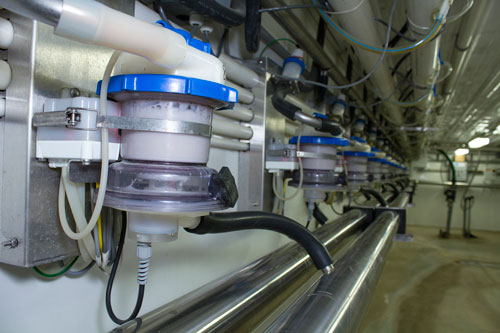
The author is an assistant extension professor in the department of agricultural and applied economics at the University of Missouri.
The financial stress experienced by dairy farmers continues to mount. In recent weeks, lower milk prices and higher feed costs have combined to further erode bottom lines, yet milk supplies are still expanding.
The latest milk production report showed March 2016 production up 1.8 percent from a year ago and 16,000 additional dairy cows joined the national dairy herd since the start of 2016. USDA's May 2016 World Agricultural Supply and Demand Estimates (WASDE) report projects further increases. This month's report raised the 2016 milk production projection by 600 million pounds to 212.4 billion pounds relative to last month. All totaled, the WASDE report called for an additional 3 billion pounds of milk production in 2017.
Historical data on U.S. milk production highlights past difficulties in reducing milk supplies when producer returns are low. Since 2000, annual milk production has only declined two years - in 2001 and 2009. Milk production even expanded during the drought-induced record feed prices of the 2012 to 2013 season. In comparison, annual milk production fell five times over the 1986 to 1999 period.
The growth in milk supplies since 2000 can be linked to strong domestic and international demand for U.S. dairy products. Without this demand growth, the market could not have absorbed the historical milk supplies without experiencing significantly lower prices. A simple linear trend shows that the rate of milk production growth has been growing by 0.04 percent since 1986 due to stronger demand.
The dairy industry needs to address the inability to turn the spigot off when returns for producing milk suggest contraction is needed. During the 1980s and 1990s, there were more dairy farmers with relatively higher production costs to exit the industry during tough times. By the 2000s, the remaining operations tend to have larger fixed costs, which makes their exit more difficult.
If the assumption of less supply response to poor returns is correct, there are implications that dairy producers must prepare for the long-term. Most importantly, the only way out of low returns is for demand growth to catch up to excess milk supplies. Let's hope global demand for U.S. dairy products turns around soon or the current financial environment for dairy producers may last much longer than expected.
May 16, 2016








